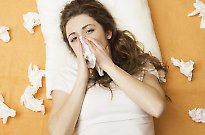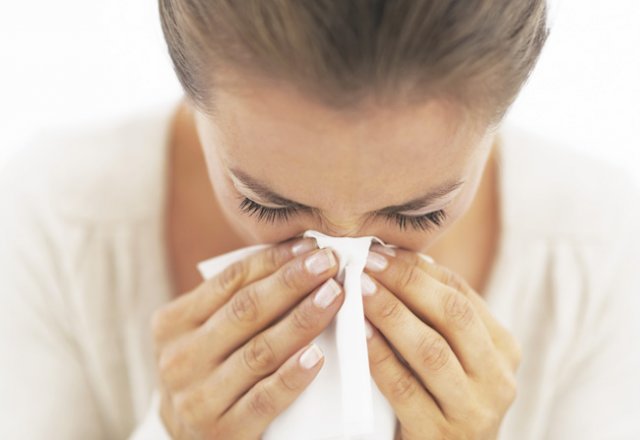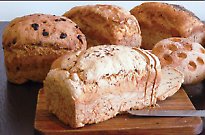
Alternative ways to combat hay fever

Reduce and prevent allergic symptoms
Battling spring allergies? Taking a tablet isn’t the only way to attack hay fever. There are a number of preventative measures that can reduce allergic symptoms and aid in the management of long-term allergic rhinitis, writes Tatyana Leonov.
Many Australians get excited about the onset of spring. Beautiful fragrant flowers begin to blossom, luscious green grass starts sprouting and birds chirp away, reminding us that the cold is almost over. However, not everyone appreciates the beginning of the new season. If your nose starts itching, your eyes begin watering and you sneeze repeatedly, you could be one of the 4.5 million-strong hay fever sufferers in Australia.
What causes hay fever?
Interestingly, Australian native plants and grasses are less allergenic than Northern Hemisphere varieties; however, Australia is abundant in an assortment of imported allergenic grasses and Northern Hemisphere plants, and the south-eastern regions of Australia (Melbourne and Canberra in particular) are known for being pollen hubs. Add in prevailing winds dispersing the pollen and you’ve got yourself millions of people sneezing come spring.
Although pollination times vary across locations in the country as well as with plant varieties, if you’re one of the spring season casualties, it’s just a matter of timing. Fortunately, there are a number of natural remedies that can help you combat the allergy symptoms and welcome the season sneeze free.
Who gets allergies?
Allergies can affect children, the elderly and everyone in between. In Australia, hay fever is now a major public health concern. In fact, according to the Australasian Society of Clinical Immunology and Allergy, allergic rhinitis (commonly referred to simply as hay fever) affects one in five Australians regularly, and further still, one in three Australians will develop an allergy at some stage in their life. “Australia has one of the highest occurrences of allergic disorders in the Western world,” explains holistic nutritionist and Kadac (provider of organic, natural and health products in Australia) representative Anna Batsanis. “Evidence shows that the predominant age group is between 25 and 44 years old, although allergies can affect any age group.” Unfortunately, the effect of seasonal allergic rhinitis can be taxing on the body and allergy symptoms can often subsequently go hand in hand with sleep deprivation and increased sinus infections.
Hay fever is a result of the pollen that is released from flowers and grasses as they begin to blossom. The symptoms are easy enough to identify (runny nose, sneezing, inflamed eyes, sinus and headaches to name a few), but it can also trigger asthma, impair children’s ability to learn and reduce a person’s overall productivity.
Some people are more prone to allergies than others, even if they are in the same family and follow similar nutrition and exercise schedules, and children will often have stronger allergy symptoms because their immune system has not completely developed. “The commonly accepted wisdom is that a child raised in an environment that is too sterile will have a compromised immune system and therefore have difficulty coping with normal everyday allergens,” says Kalianna Dean, a health coach, yoga instructor and long-time allergy sufferer, who learnt the importance of supporting the immune system (rather than just avoiding trees or living indoors) to cope with hay fever and allergic asthma.
Natural minimisation
The first step in natural minimisation is identifying the plants, trees and grasses that trigger allergic symptoms and lessening exposure where feasible. This, however, is not always possible – or practical – and fortunately there are other actions one can undertake to help transition between the seasons feeling well.
Eating nutritiously is one of the crucial steps towards general wellbeing and fundamental in helping fight allergies on a more permanent basis. It is common knowledge that a diet high in vitamins and antioxidants is pivotal in maintaining everyday health, but it’s also important in the prevention of allergic rhinitis.
Eating good quality, nutritious food that is locally sourced and as close as possible to its natural state does wonders for the body (and mind). “A body that is trying to deal with the effects of a typical Western diet is already stretched to its limit. It has nothing left to fight off relatively harmless allergens – so they win the bacteria wars that happen on a regular basis within every body,” explains Dean. “A body that is nourished and as free as practicable from modern toxins, however, can often cope just fine.”
Dean recommends that those suffering from frequent colds, sinus problems, digestive issues and low energy levels attempt an elimination diet to work out which foods trigger negative reactions.
“Getting rid of everything for a couple of weeks and then reintroducing foods one at a time, in a controlled way while monitoring reactions, is a good way to understand how common foods can be linked to symptoms,” she says. Karina Stewart, doctor of traditional Chinese medicine and co-founder of Kamalaya Wellness Sanctuary and Holistic Spa Resort in Thailand, agrees:
“Good health can help ease allergy symptoms, and good health starts with nutrition. People sensitive to airborne allergens may also be sensitive to certain foods. Identifying and removing those foods from the diet can greatly improve health and reduce allergy symptoms.”
Food as medicine
Choosing food knowledgeably can play a substantial role in decreasing, and often eliminating, allergic rhinitis. Some of the foods that can assist as part of an allergic rhinitis prevention approach include:
- Omega-3 fatty acids. Numerous studies have found that omega-3 fatty acids can help decrease the incidence of hay fever. “The reason for this is that a diet high in omega-3 fatty acids lowers the amount of inflammatory chemicals produced by the body after exposure to an allergen,” explains Stewart, citing wild salmon, rainbow trout and oysters as nutritious options.
- Garlic contains compounds that reduce the inflammation that often occurs as a result of hay fever. Stewart suggests using garlic liberally in meals, even recommending eating it on its own to reduce teary eyes and nasal irritation. Batsanis agrees and says that “the benefits of garlic are widely documented and it is often praised for its anti-inflammatory and antiseptic properties. Garlic has been known to be an allergy fighter due to its high amount of quercetin, an antioxidant-rich flavonoid that stabilises the body’s histamine-producing cells.”
- Bioflavonoid-packed onion works in a similar way to garlic. “Bioflavanoids are a class of antioxidants that fight inflammation,” Batsanis says. “One of the most prominent is quercetin (also found in garlic), an effective antihistamine that can reduce swelling in the lungs and nasal passages.” Other sources of quercetin include cayenne pepper (adding just a little to meals will stimulate the immune system and subsequently lessen allergic reactions because of its anti-inflammatory properties), as well as green and white tea.
- Local raw honey is another fantastic option. Local and raw food in general is ideal where possible, but honey in particular is beneficial because it works as a desensitiser to local pollens. “It has been shown to help people’s immune systems adapt to the plants the bees pollinate,” Dean says.
- Watercress has been used for nasal and bronchial afflictions for centuries. According to Batsanis, these palatable and peppery leaves are packed with powerful antioxidants, including beta carotene and vitamin C, which has been shown to lower histamine levels and minimise symptoms.
- A variety of spices can also help combat hay fever. Turmeric in particular is a great allergy fighter because its active ingredient, curcumin, is a powerful anti-inflammatory and antioxidant. Spices such as mustard, chillies, horseradish and fenugreek help through a crude homoeopathic effect. “These spices can relieve the same hay fever-like symptoms they produce,” says Stewart.
Still sneezing?
Although reaching for tablets may seem like the only viable option when in the thrust of a violent hay fever episode, there are a number of other natural remedies that may assist.
Balancing gut flora by using prebiotics, such as acidophilus or bifidophilus, will not only aid digestion, but also improve the immune system and consequently help with resistance to hay fever. And ensuring vitamin C levels are adequate can be beneficial because vitamin C aids in preventing the formation of histamine.
Herbal usage as a mild treatment option can likewise reap rewards. Stewart recommends chamomile tea or ginger tea with honey for tea lovers. “Chamomile and lemon taken orally as a herbal tea infusion throughout the course of a day can be helpful,” she says, “while ginger tea with a dash of honey works to break up chest congestion and loosen phlegm.”
And although avoidance may seem dramatic, staying indoors during peak pollen season on a windy day with a nice cup of ginger and honey tea isn’t that bad an option really.


